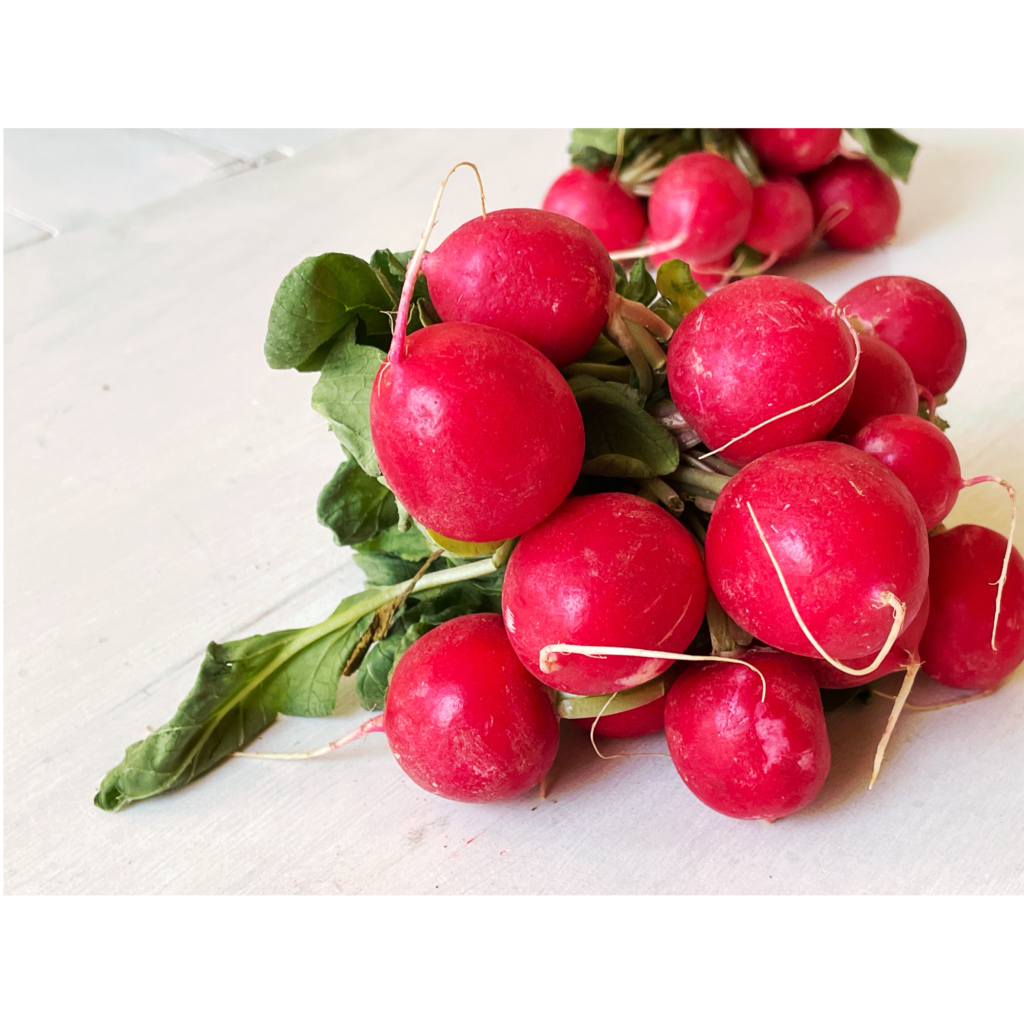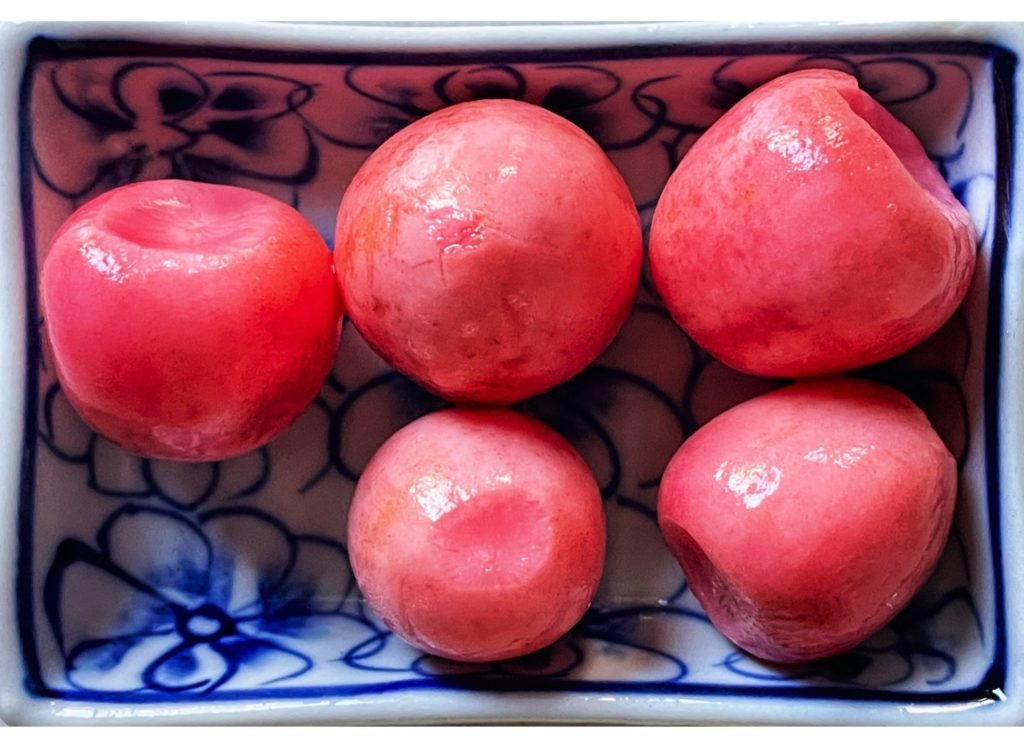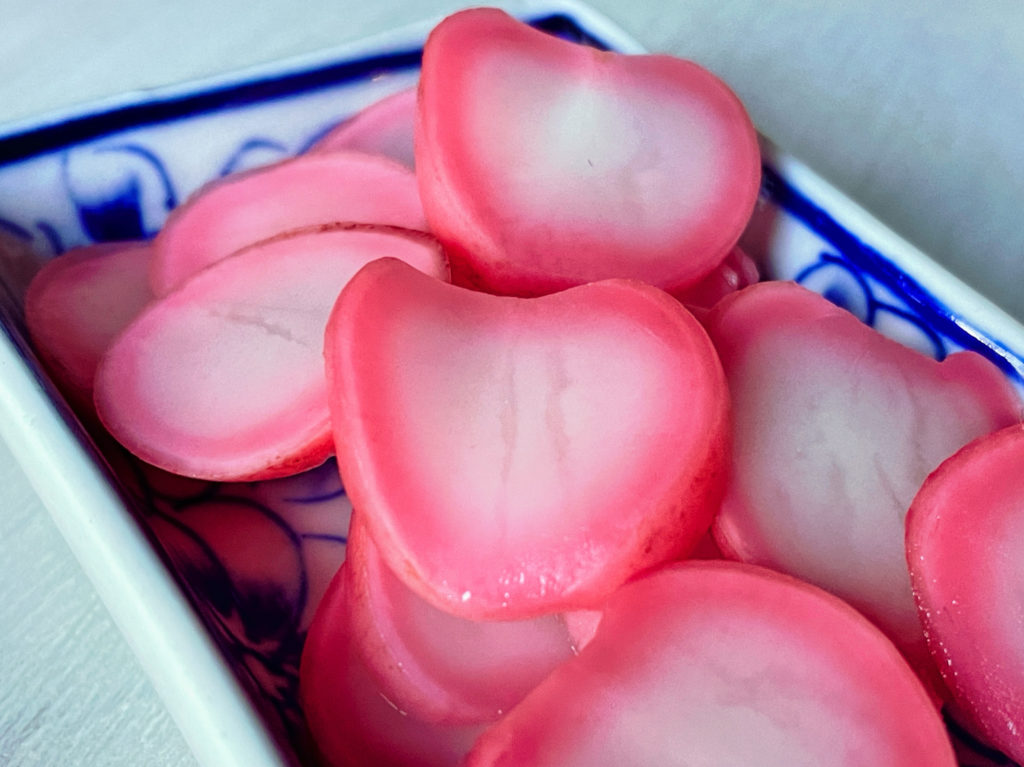Fermentation is slow food. Generally speaking. Radishes, for example, are in the jar in just a few minutes and also have the best taste after just a few days of fermentation. So they are a perfect short-time ferment. Nevertheless, they are of course considered Slow Food, as the name means so much more than just preparing or enjoying food slowly.
Like the globally active non-profit organization Slow Food, for example, which was founded in Italy in 1989 as a counter-movement to the ever more widespread fast food. The organization's goal is to maintain traditional food craftsmanship and preserve regional flavor diversity. Slow Food stands for products with authentic regional and seasonal character, produced and enjoyed in a traditional or original way. Fermentation is an important Slow Food topic.
Fermented radishes are slow food
Fortunately, you can still try out for yourself very quickly whether you like radishes as a ferment. Because after only three days, the pleasant sour taste, the incomparable aroma, the consistency and the overall pink color are present in the jar and the small tubers can already be devoured. Personally, I like them best after 4-5 days.



By the way, radishes are not only delicious and beautiful to look at, they are also healthy. The mustard oils they contain determine the taste, protect liver cells in liver diseases and, according to the latest scientific findings, even have anti-diabetic properties.
INGREDIENTS
- 1 bunch of radishes
- 3% salt brine
- 1 tsp mustard seed *
- 1-2 stalks Thai basil (horapa) *
* also try alternative herbs and spices, it's so wonderful to experiment with flavors! Radishes are already a blast as a plain raw vegetable, but it's fun to try other flavors. The combo above with mustard seed and Thai basil tastes best to me, but your taste will decide. You can add garlic, dill, thyme, sage, scallions, peppercorns, chili rings, onion slices, or your favorite spice blend, like Café de Paris or Garam Masala.
PREPARATION
Clean radishes and remove the green. Don't throw the greens in the compost, they are totally delicious! You can find a few ideas for using at the bottom of this article. While you are at it, make a 3% brine with water and salt. One bunch of radishes fits nicely in a 500ml container, that leaves room for about 200-300ml of brine. For 300ml of water, 3% salt equals 9 grams.

Place spices and herbs in the bottom of the container, layer radishes on top and top with the brine.
The radishes and spices need to remain covered by the brine for a safe fermentation process, so I find weights handy for this ferment. Some fermentistas fill the jars to the brim and do not weigh down the ferment. This also works, but will cause brine to leak out of the jar as the fermentation progresses. Because the brine is salty and then also already acidic, the lids or metal brackets of the jars will corrode in the long run. Sometimes I do this anyway, for example if I can find a more suitable jar for the amount of radishes. You can see that well in the picture.
I actually don't like the high fill though, I prefer space in the jar for the brine to rise and prefer to use weights or other material barriers to deal with floating vegetables.
Ferment for at least 3 days. A good location is the warm kitchen.
I like radishes best after 4-5 days. It's best to try it out for yourself when they meet your taste. The first time you can just leave the jar to find out at what acidity level it tastes best to you. Please remove the radishes consistently with clean cutlery. If you like the taste, slow down the fermentation activity by placing the jar in the refrigerator.
Eating fermented radishes
I most often serve fermented radishes simply as a healthy snack. My second favorite use is in salad, where I think of Israeli beet salad, tuna salad, celery salad or simply green salad with a few herbs and a tasty dressing.
They also make an excellent side dish. Sandwiches, pulled meat and burgers go great with the finely acidic, crunchy fresh fermented radishes. By the way, these can also be very well vegan burgers.



Zero Waste ideas
I am always happy when I can use vegetables completely and fight against food waste. The green of the radish, which you may have thrown away out of old habit until now, tastes very good! I like to make it plain steamed with onions, or as a creamy soup. Pesto made from radish leaves, nuts or seeds and good oil is also delicious, it tastes wonderfully fresh and spicy.
Sources
- Plants Consumption and Liver Health, Yong-Song Guan, Qing He, https://www.ncbi.nlm.nih.gov/pmc/articles/PMC4499388/
- Benzylglucosinolate Derived Isothiocyanate from Tropaeolum majus Reduces Gluconeogenic Gene and Protein Expression in Human Cells, Valentina Guzmán-Pérez et.al., https://journals.plos.org/plosone/article?id=10.1371/journal.pone.0162397

“For 300ml of water, 3% salt equals 3 grams”
It’s actually 9 grams.
Thanks for finding that, you are absolutely correct. It got lost in translation, in German I got my arithmetic down 🙂
Danke, dass du auch das rosa Ergebnis präsentierst – ich war überrascht, das die rote Farbe sich “auflöste” und wie nach innen gewandert ist – Resultat ist toll (wenn man nicht mit rosa nur Würstchen assoziiert ).
Gerne! Geniess es.
Liebe Katsu,
Du hast mich voll inspiriert, hab jetzt erstmal Weißkohl und Radieschen angesetzt und freue mich schon auf das Ergebnis. Viele Grüße ♡
Oh, wie schön! Gutes Gelingen.
Hallo Katsu,
Sind die fermentierten Radieschen für eine längere Lagerung geeignet?
Dankeschön im Voraus und viele Grüße aus Franken
Hej Irina,
wenn es Dir schmeckt, auf jeden Fall. Probiere es aus! Ich mag sie lieber nach kurzer Zeit, aber das ist persönliche Präferenz.
Gutes Gelingen,
Katsu
Ich bin neu in der grossen Welt des Fermentierens und bin mir oft nicht sicher, wann muss ich Glas luftdicht verschliessen und wann einfach nur ein Deckel auflegen. Wie machst du das bei den Radieschen? Ich hätte jetzt den Deckel aufgelegt (Weck Glas) und erst nach der Fermentation mit Gummi luftdicht verschlossen und kühl gestellt. Ist das richtig?
Hei Claudia,
das Glas wird sofort mit Deckel und Gummi verschlossen und bleibt so, bis du das Ferment verzehren möchtest. Ab dem Zeitpunkt der Öffnung wird es im Kühlschrank gelagert und zügig verbraucht.
Gutes Gelingen!
Katsu
Hallo Katsu,
das Gemüse mit der warmen oder kalten Lake übergießen?
Hej Miriam,
du brauchst nichts zu erwärmen.
Gutes Gelingen!
Katsu
Leider tut sich bei mir nach 3 Tagen relativ garnichts, nach 7 Tagen im Raum beginnt sich nun etwas die Farbe aufzulösen und es blubbert. Der Kimchi funktioniert bei mir irgendwie viel schneller als die Radieschen.
Schau mal hier, das könnte dir weiterhelfen: https://fermentation.love/fermentation/fermentation-faq/#was_ist_die_richtige_temperatur_fuer_mein_ferment.
Hallo,
ich hab u.a. die Radieschen ausprobiert. Nach einer Woche bei Zimmertemperatur schmeckten sie wunderbar sauer und frisch, etwas nach Essiggurke. Ich stelle sie also in den Kühlschrank. Und jetzt zwei Tage später schmecken sie nur noch wie fades Etwas. Nicht mehr säuerlich, kein Geschmack.
Was ist passiert?
Für einen Tipp wäre ich dankbar. Danke!
Hej Manfred, hast du sie kalt gegessen? Kälte raubt Aromatik, das könnte ein Grund sein.